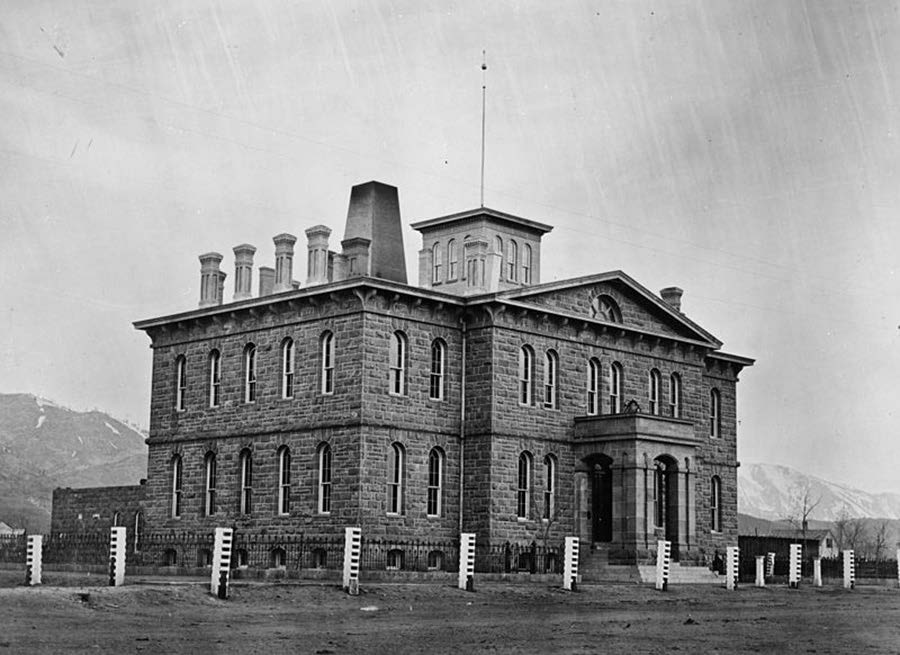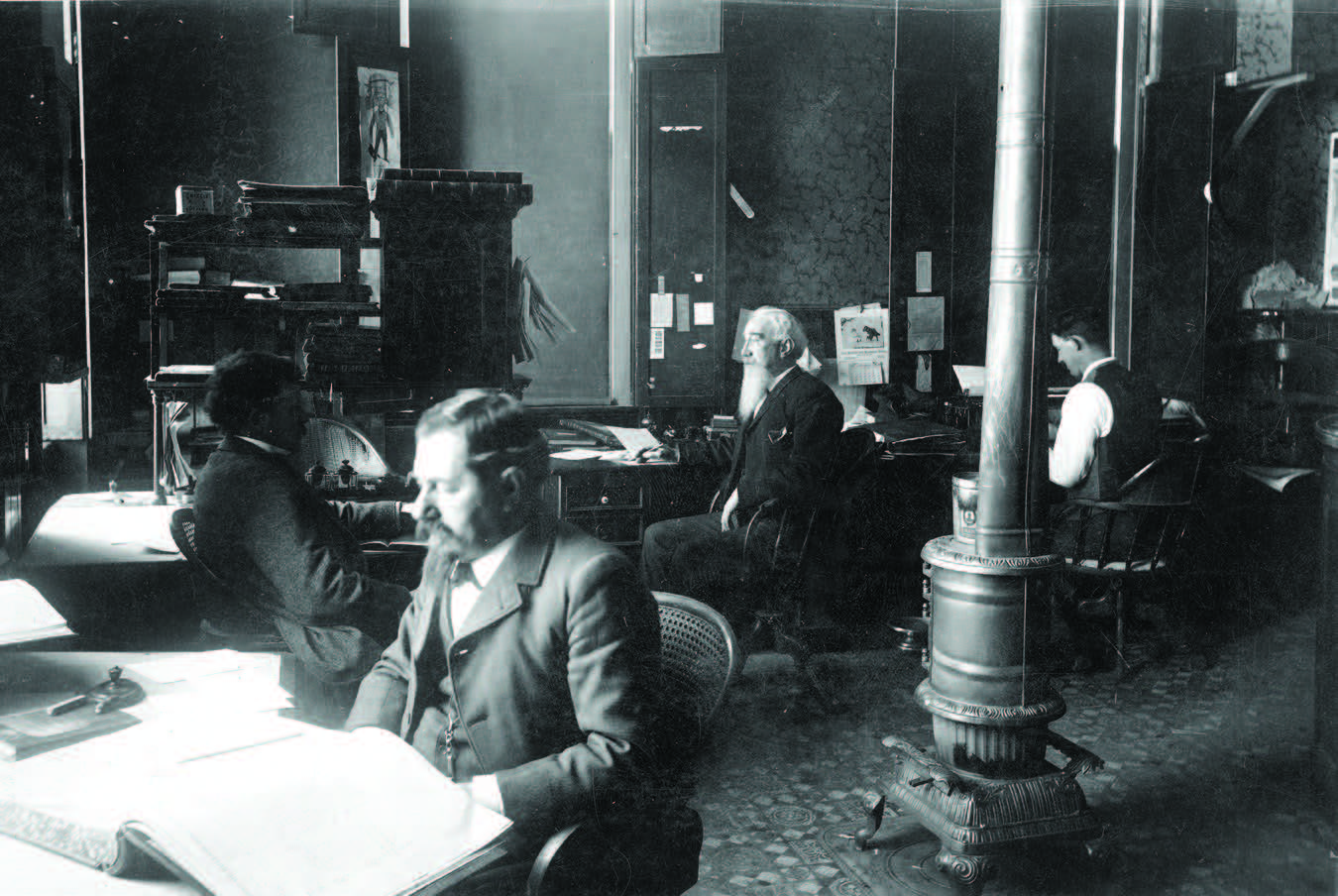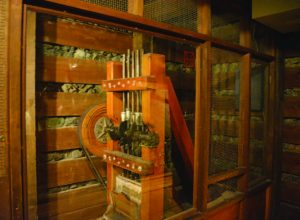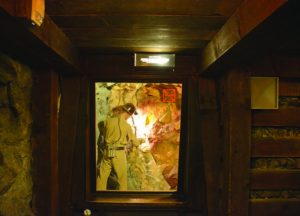Hard Pressed to Survive
July – August 2018
 Born from The Comstock Lode, the Carson City Mint had an illustrious but difficult life.
Born from The Comstock Lode, the Carson City Mint had an illustrious but difficult life.
BY MEGG MUELLER
 In a world of PayPal, Bitcoin, and all manner of electronic currency where paper money looks downright antiquated, coins are relegated to almost nuisance status. Heavy and destined for the ashtray or swear jar, coin as currency is a near relic. But since 1792, the U.S. has been minting coins for trade and commerce, and in all that time just eight towns were honored with the presence of a mint. Carson City is one of those towns, and the history of the Silver State’s only mint is one that could make you rethink that change rattling around in your pocket.
In a world of PayPal, Bitcoin, and all manner of electronic currency where paper money looks downright antiquated, coins are relegated to almost nuisance status. Heavy and destined for the ashtray or swear jar, coin as currency is a near relic. But since 1792, the U.S. has been minting coins for trade and commerce, and in all that time just eight towns were honored with the presence of a mint. Carson City is one of those towns, and the history of the Silver State’s only mint is one that could make you rethink that change rattling around in your pocket.
HARD PRESSED FROM THE START
Congress established the Carson City Mint in 1863 to deal with the onslaught of silver and gold from The Comstock Lode. Coinage was needed, and despite the proximity of the San Francisco Mint that was established in 1854, Carson City was chosen as the home for the west’s newest mint.
Construction didn’t start on the mint right away, largely due to the Civil War and then the ensuing Reconstruction period. A major celebration happened in July 1866 when the plans arrived in Carson City, and the local paper even ran the headline “A GLORIOUS DAY FOR CARSON! The Arrival of the Mint Papers!! —Joy and Gunpowder!!!”
On Sept. 24, 1866, the cornerstone of the building was placed with more ceremony and revelry, but the mint didn’t open until long after the party was over.
“From almost the beginning and all the way through 1869 there were many starts and stops. The government was really slow in appropriating funds to keep construction going. Abe Curry was superintendent of construction and he pays out of his own pocket and actually goes bankrupt during the process, ” Rusty Goe explains.
Rusty wrote the book on the mint, literally—”The Mint on Carson Street: An Enthusiast’s Guide to the Carson City Mint.” He is the owner of Southgate Coins, based in Reno, and has spent decades helping collectors build collections of the mint’s 111 different date and denomination types of coins. After more stops and starts, the mint is completed with a cost of more than $425,000 and the very first silver dollars roll off the coin press on Feb. 4, 1870.
Unfortunately, more challenges await Nevada’s mint.
CHANGE DOESN’T COME EASY
 “I don’t know if there was ever a year that the residents of Carson City were not afraid it was going to be closed down,” Rusty says.
“I don’t know if there was ever a year that the residents of Carson City were not afraid it was going to be closed down,” Rusty says.
From the first month in operation, agitators in Washington, D.C., California, and even Nevada began to push for the mint’s closure.
“The Carson City Mint was a political football,” Rusty explains. “Depending how compliant Nevada’s politicians were to the politicians back east, they’d get favorable or unfavorable treatment for their mint.”
The mint was the only act of federal patronage the state had received, and it meant a lot to Nevadans. President Lincoln granted the Silver State the mint and many felt it was in thanks for the deep coffers the new state brought to the Union. Many Democrats were not so keen on the honor, but with a Republican president, they bided their time.
Within the state, opposition came from an unlikely source: The Bonanza Kings of the The Comstock Lode. John Mackay, James Fair, James Flood, and William O’Brien preferred to use the San Francisco Mint to process their bullion.
“They would never publicly claim not to support it, but they seemed to send just 10 percent or less to Carson,” Rusty estimates.
With major holdings in California real estate, the four magnates were more interested in reinvesting their windfall there than in Nevada where the money was made. They even established a mill and refinery in San Francisco, and worked with agents there to sell bullion to foreign markets. The Carson City Mint was small potatoes, comparatively, and they simply didn’t give it much thought. This despite the fact the amount of gold and silver coming from The Comstock was the reason the mint was established.
Monopolies within the transportation industry made things even more difficult. Railroad services in Nevada were charging exorbitant amounts to ship bullion out of
The Comstock mines to Carson. According to Rusty, they were charging as much to transfer bullion to Carson—just 14 miles away—as it would have cost to send it to New York, then onto San Francisco, then back to Nevada.
“It was plain discrimination,” Rusty says. “It was cheaper for miners to ship bullion to San Francisco and even sometimes Philadelphia.”
CHANGE IS COMING
The mint survived the naysayers until 1885, when Democrat Grover Cleveland was inaugurated. He was the first Democratic president since Nevada gained statehood and the mint came online, and unfortunately mint superintendent James Crawford died the day before Cleveland’s inauguration. The loss of Crawford was big for the mint; he had been superintendent for 10 years and was a beloved and influential man. He was replaced by a Democrat but for four years, no coins were struck.
The election of Republican Benjamin Harrison in 1888 sees the mint reopen. Harrison the candidate had promised the mint would reopen, and he made good on his word. After sitting dormant, repairs were required on the coin presses, other equipment, and the building, and coining operations don’t start running until October 1889. For three years, the mint enjoyed one of its most prolific periods. The good times weren’t meant to last, however.
In 1892, Grover Cleveland won an unprecedented second term, the first nonsequential presidential term in U.S. history. Coupled with the declining production of The Comstock Lode, it’s curtains for the mint. The last coins produced were in June of 1893, but the building remained open as an assay office.
 There were hopes the mint would revive coinage operations, but in 1895, a scandal squelched all hopes. Newspapers across the country broke the story that nearly $80,000 in gold bullion had been embezzled from the mint going back to 1892. Two men were charged and eventually found guilty.
There were hopes the mint would revive coinage operations, but in 1895, a scandal squelched all hopes. Newspapers across the country broke the story that nearly $80,000 in gold bullion had been embezzled from the mint going back to 1892. Two men were charged and eventually found guilty.
The building served as an assay office for more than 30 years. In 1933, a victim of the Great Depression, the Carson City Mint closed its doors one final time.
A NEW PURPOSE
On his usual morning walk in the summer of 1938, District Judge Clark J. Guild noticed a for sale sign on the building. Since closing, the building had fallen into disrepair with a leaky roof and debris scattered from the removal of its equipment. But the judge saw something else.
“It would make a fine museum and we haven’t got one in Nevada,” Guild told his friend George Sanford, a prominent attorney in the state.
Guild’s foresight led to the state purchasing the building for $5,000 and on Nevada Day in 1941 the Nevada State Museum opened its doors to the public.
“It is one of the greatest saves in the history of Nevada,” Bob Nylen, curator of history for the museum, says.
The museum today consists of three buildings: the historic mint building, the Calhoun annex that was added in the 1970s, and a separate building to the north, which was purchased in 2004. In 2009, a beautiful concourse was built to link the three buildings and give access to all five floors for those with mobility concerns. At the centerpiece of the museum is the mint exhibit, housed in the original building.
A self-guided tour starts with a video that shows the history of the mint, and discusses the mine exhibit in the basement, which is still part of the museum today.
“I’ve taken many groups down there and some people actually believe they are in a real mine,” Bob says. “It really shows the workmanship of the exhibit.”
A kiosk in the exhibit provides information about how bullion was taken from the mines and the processing of it at the mint. It also notes the significant contribution women made to the mint, working in jobs from quality control to operating coin presses and milling machines. Women adjusters were responsible for making sure the coin blanks—known as planchets—were the exact weight required for minting. After doing thousands of planchets, Bob explains, the women had such a sensitivity they could file the tiniest bits of gold or silver off to reach the correct weight, all without using a scale.
The women wore leather aprons to collect the valuable dust, and each year in June, there was an accounting of how much gold and silver dust was recovered. This was sent to the mint director to show just how frugal and successful the adjusters were in their efforts to conserve the valuable minerals. They even burned their clothing periodically, just to collect any residue.
A massive, 10,000-ounce scale was acquired from the San Francisco Mint in the early 1990s for just $1. But the biggest coup, and the star of the exhibit is undoubtedly coin press No. 1.
PRACTICALLY MINT CONDITION
“It’s amazing that it was built 150 years ago, went into operation when the mint opened in 1870, and is still running today,” Bob says. “We operate it on Fridays, and people are just fascinated when they see it running.”
Visitors can purchase a planchet in the museum gift shop and on Fridays watch while it is minted right in front of them. It’s an incredibly popular activity at the museum, and shows how much coins with the “CC” mintmark still mean to people.
“Nothing personifies ‘Made in Nevada’ more than a Carson City coin,” Rusty says. “It’s just incredible homemade workmanship that’s survived all these years, and it reminds people what it must have been like for the locals to have had this mint in their backyard.”
In all, there are 111 coins that today make up a complete collection of the coins minted in Carson City. According to Rusty, only one complete set can exist at any one time, and only two people in history have ever completed the collection, due to the fact that there are two extremely rare coins in the set. There are only five known 1873 quarter dollars without arrowheads next to the numbers, but remarkably, there is just one 1873 dime without the arrowheads in existence. In 1950, a collector purchased the dime for the then-highest price ever paid for a U.S. dime: $4,000. His family owned the dime until 1996, when it was sold for the whopping price of $550,000.
In 2004, Rusty bought the dime for $891,250 and sold it to a client who at one time owned the only complete collection (the entire collection, which Rusty christened with the name Battle Born in honor of Nevada, sold at an auction in Philadelphia in August 2012 for approximately $10 million). The value of the Carson City Mint’s coins in the numismatist world is undeniable.
The museum has an impressive collection of the remaining 109 coins on display, just across from the coin press itself. How the coin press came back to the museum is almost as impressive as those rare coins.
“If this machine hadn’t had a break down, it probably wouldn’t exist today,” Bob explains. “In 1878, it developed a crack on the right side, and it went to the Virginia & Truckee railroad shop for repairs.”
The V&T shop, after repairing the press removed the original builders’ plate and replaced it with one of theirs. When the mint closed, the press went to the Philadelphia Mint and then later to the San Francisco Mint.
“In the 1950s when the San Francisco Mint was getting ready to scrap it, they saw the V&T plate and contacted us. We bought it back for $250,” he says.
The press today sits in the assayers office, where visitors can marvel at the 6-ton marvel as it produces half-dollar size coins. When the machine was put into operation it produced 100 silver dollars per minute; while today’s pace produces coins at a much slower, more protective rate, the thrill of watching a coin produced with Carson City’s famous “CC” mintmark is no less impressive. Perhaps it’s even more so considering all that went into the creating and protecting of Nevada’s only mint.
One final thing: The next time you go to dump those coins in your change jar, don’t forget to take a look for that elusive dime.



